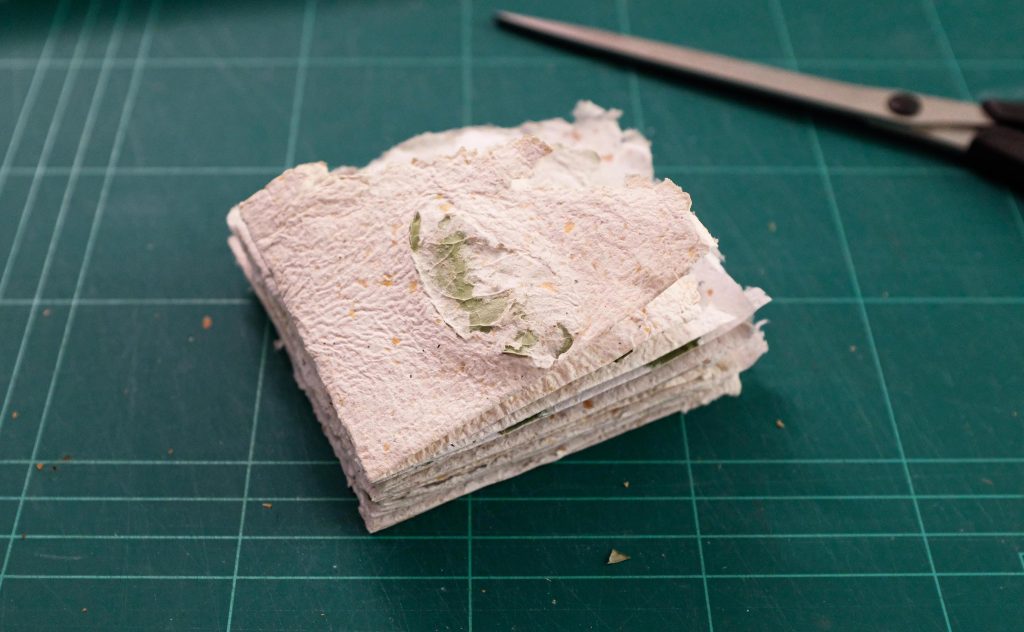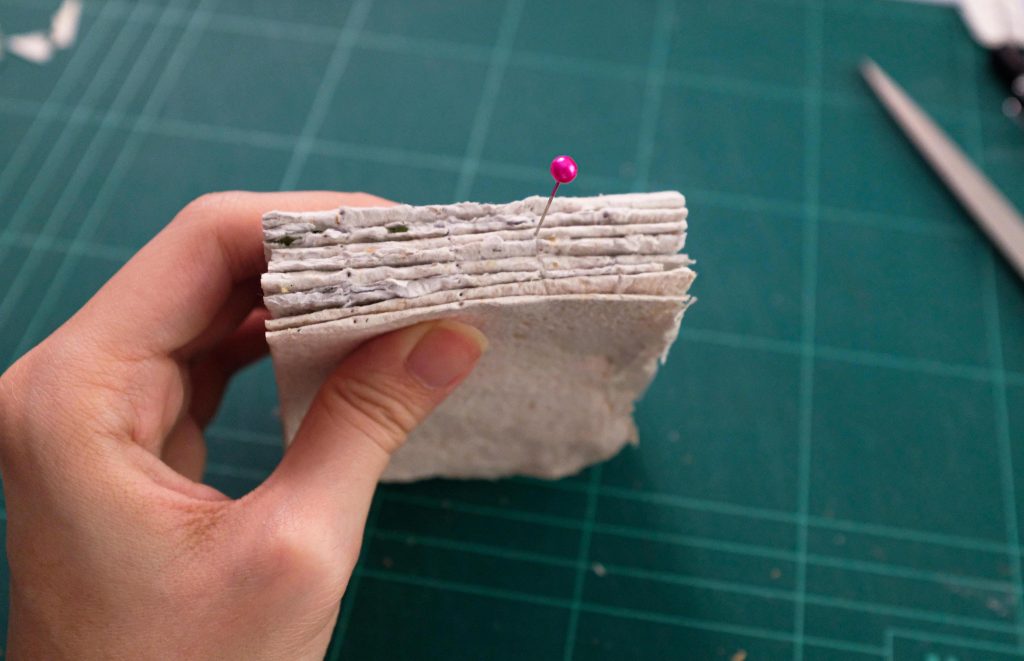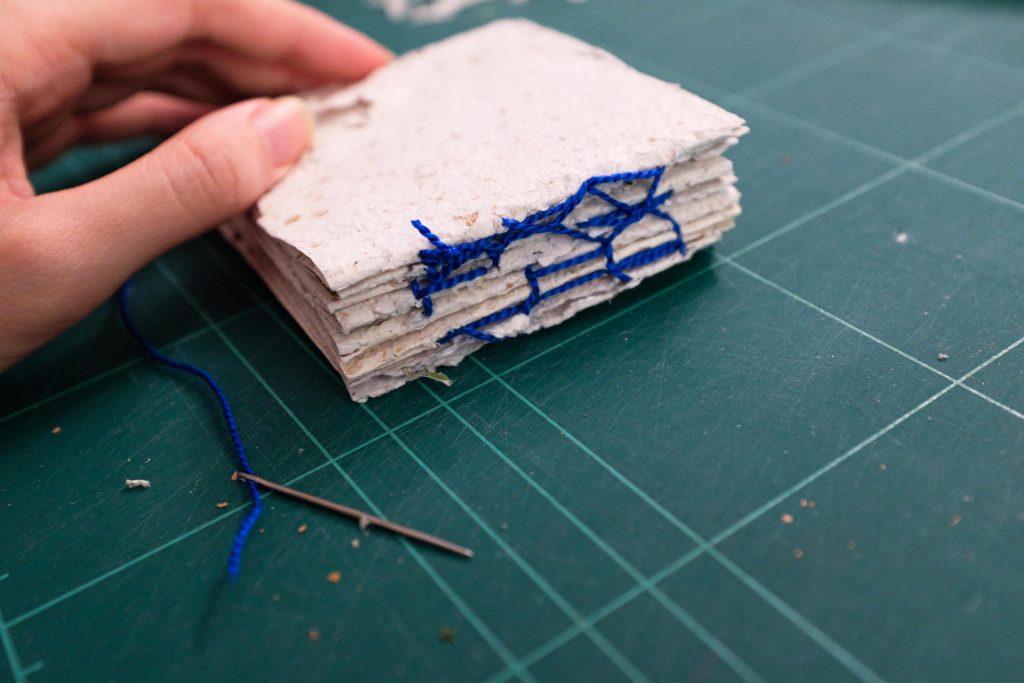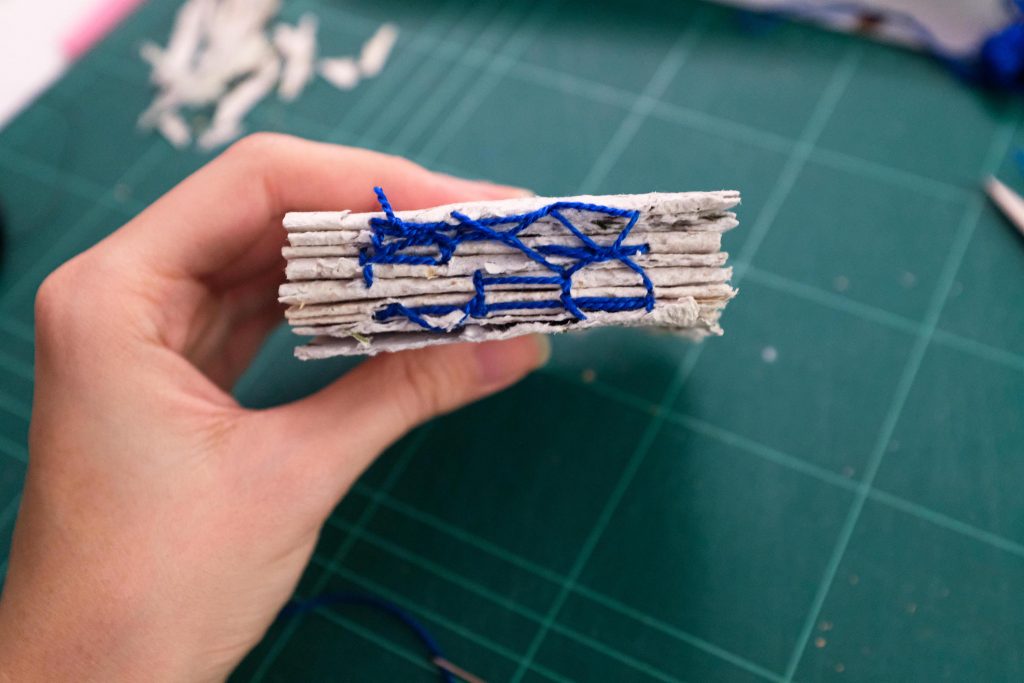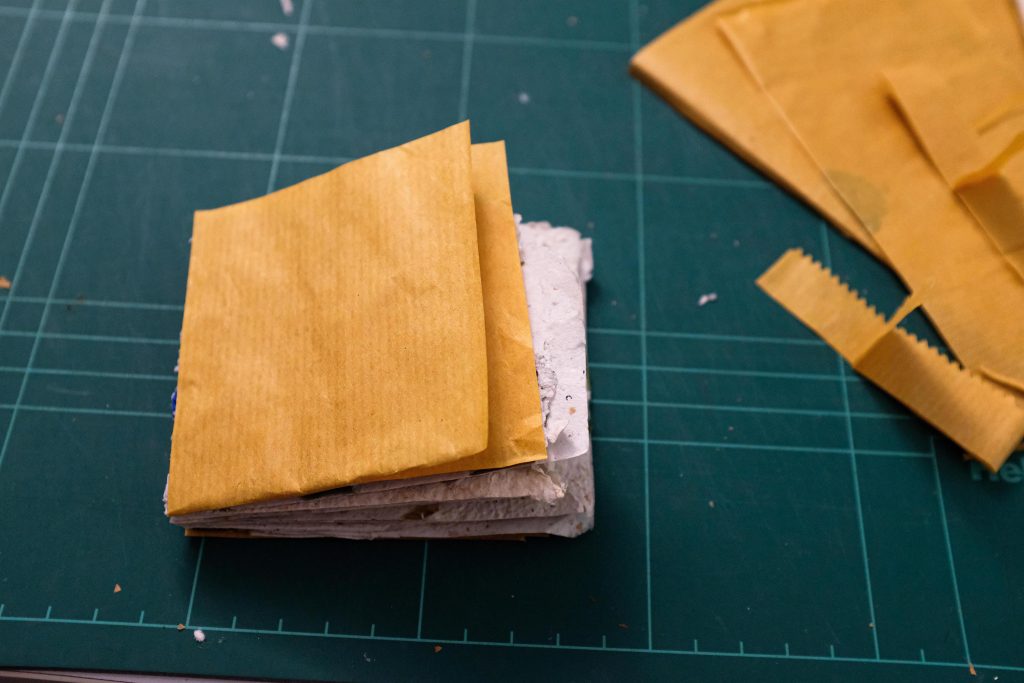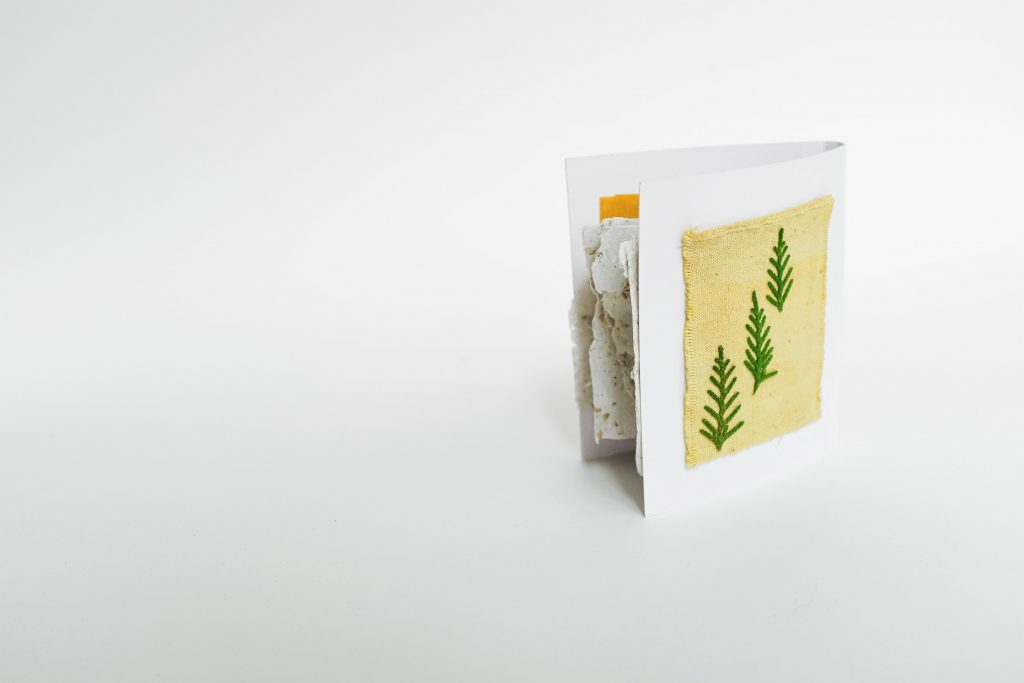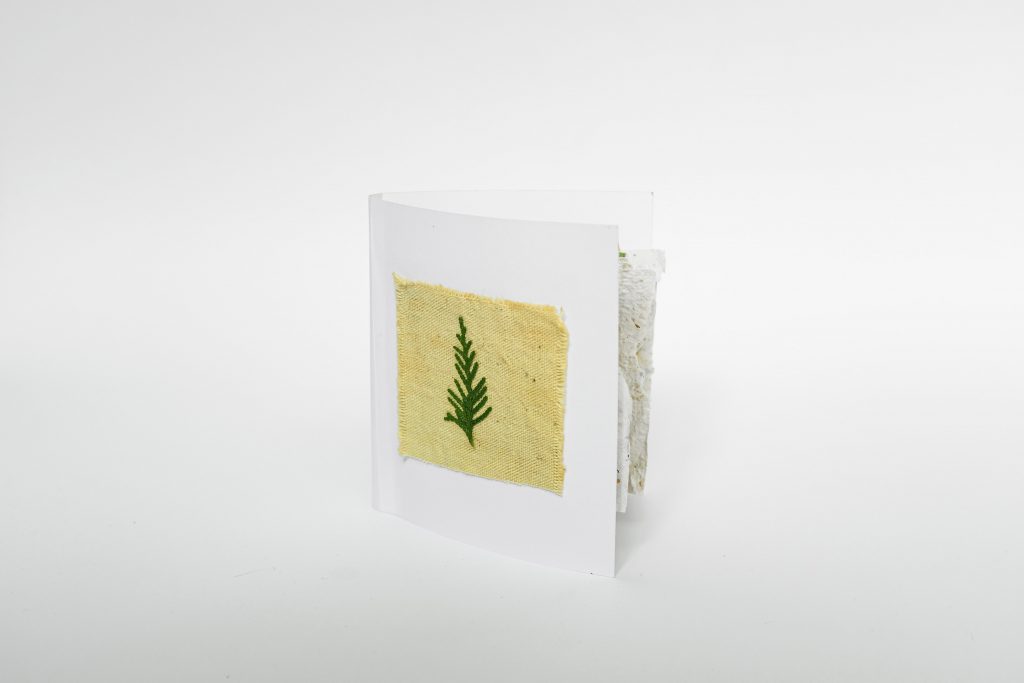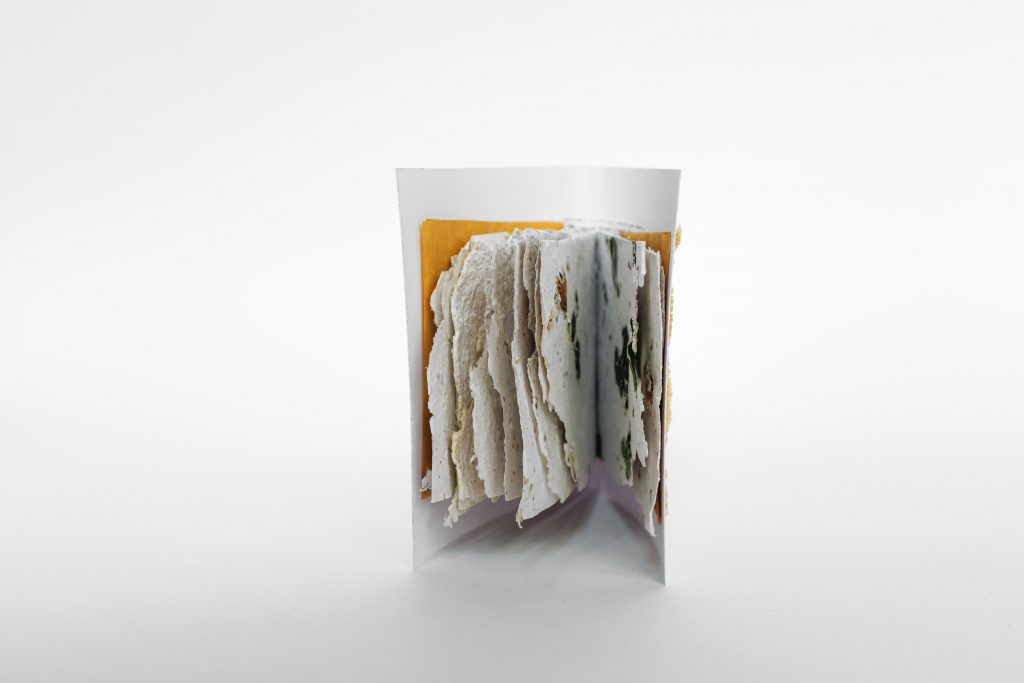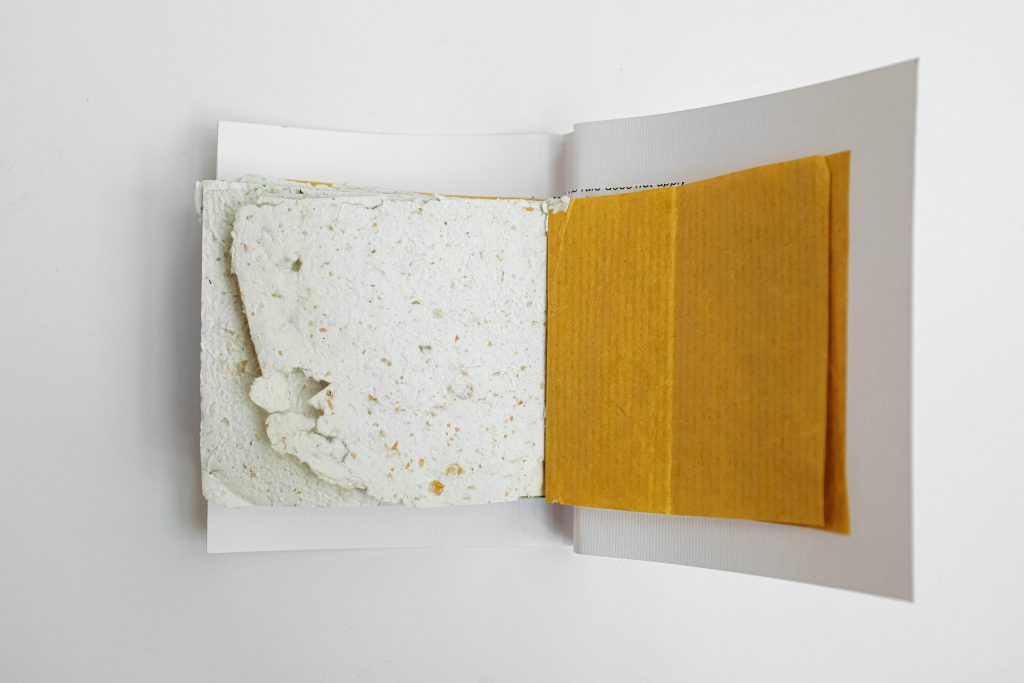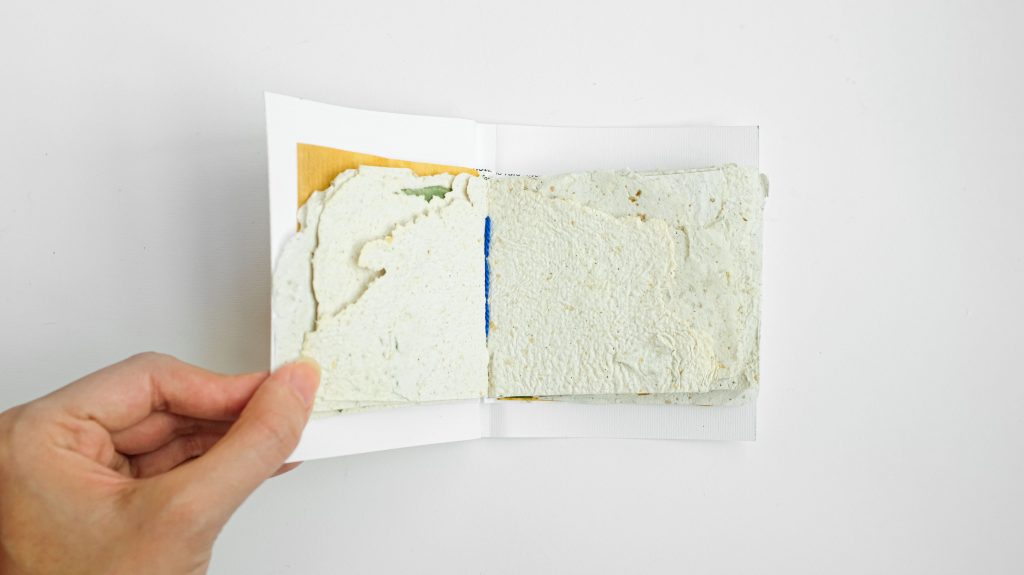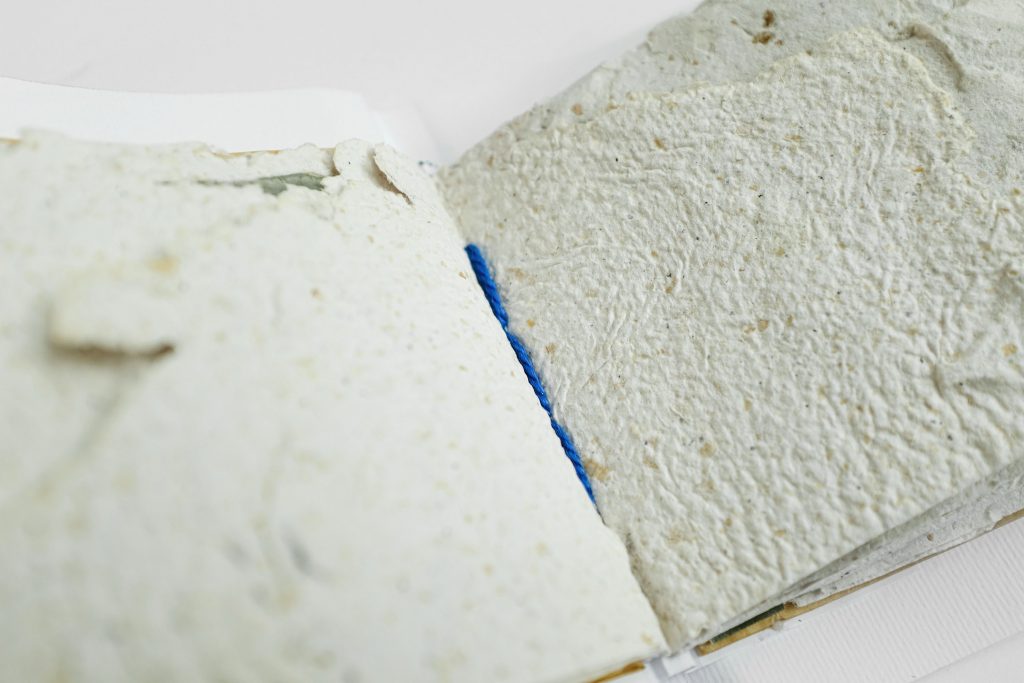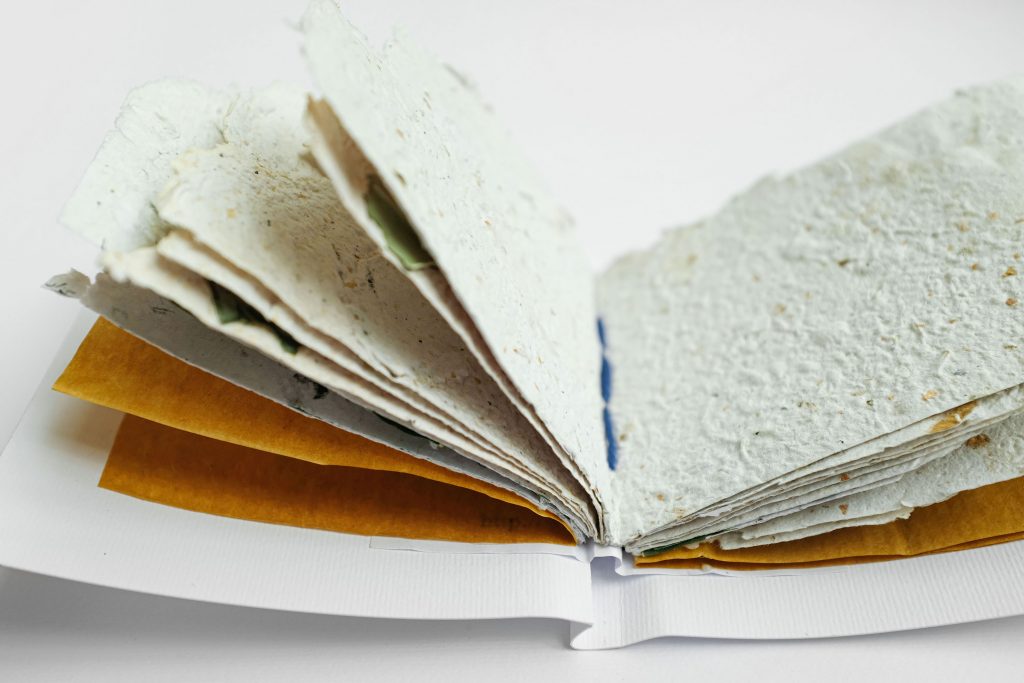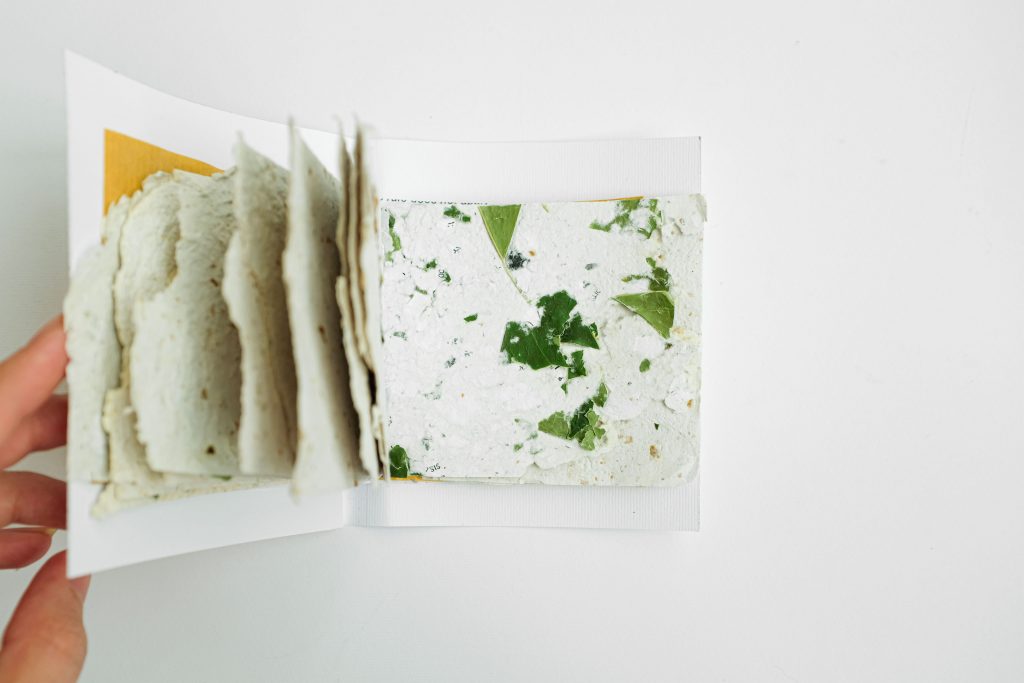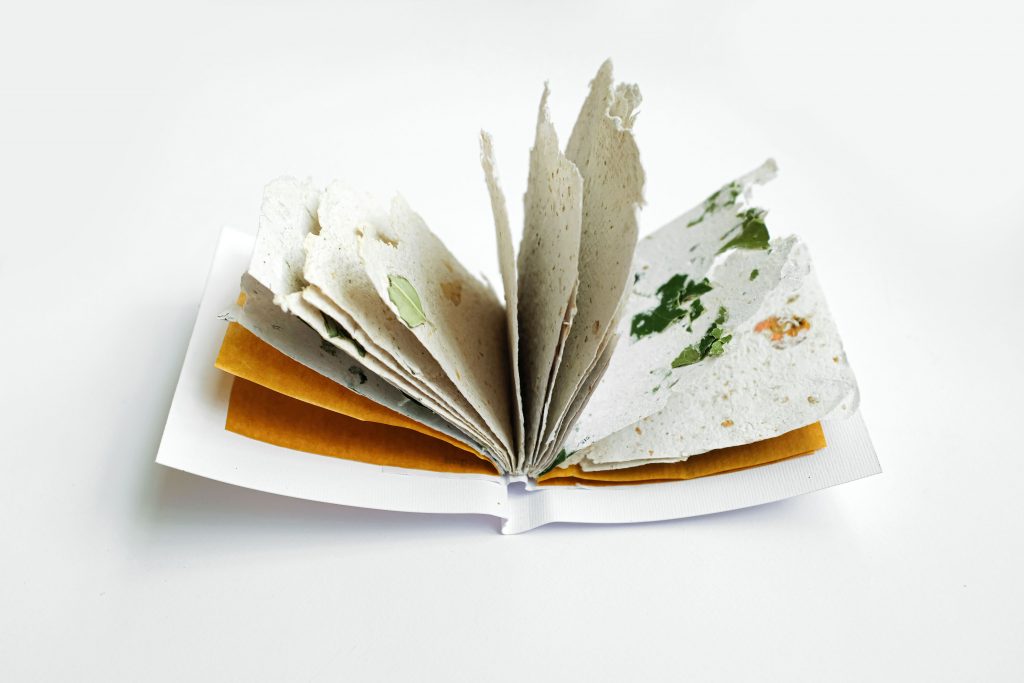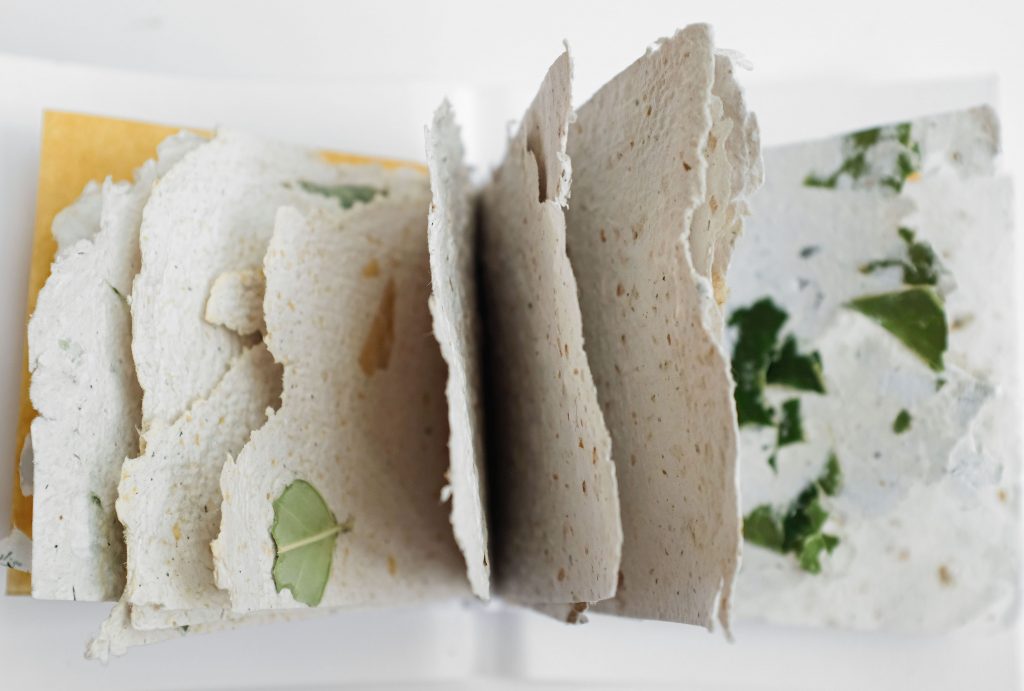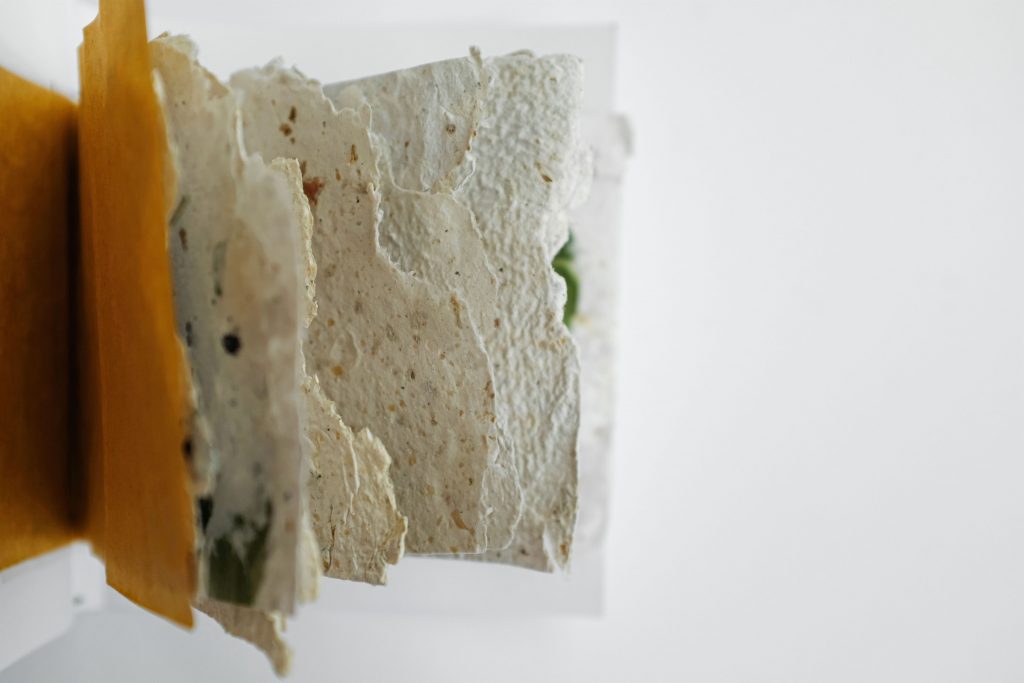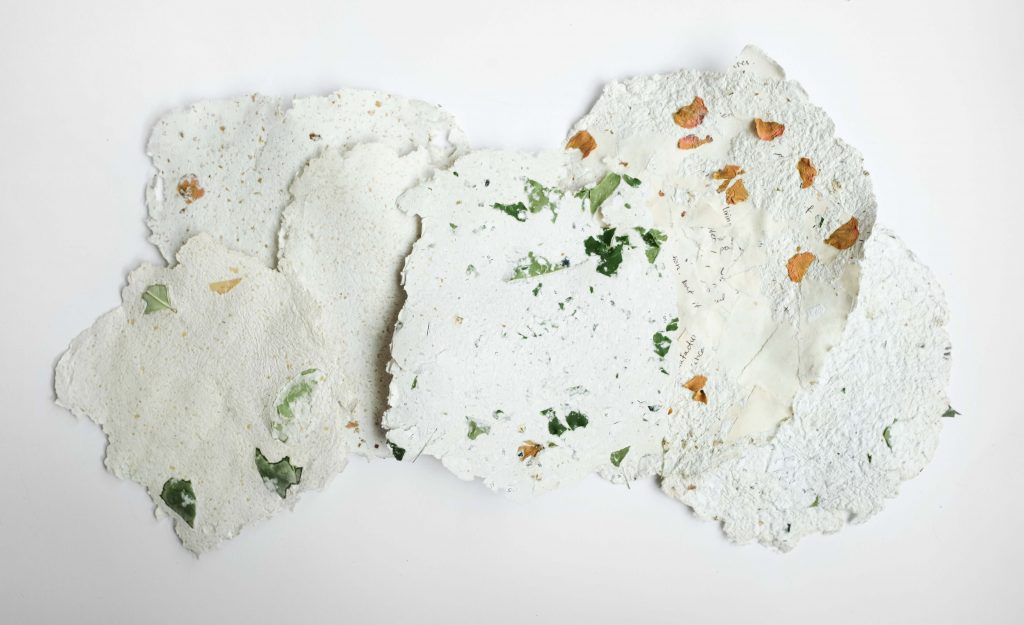
After Action 10, I was left with all of these papers. I was thinking: now what? What do you want to do with them? Just putting them away didn’t feel right. Then the idea of turning them into a notebook came into my mind. I had zero knowledge about bookbinding, so I had to watch tutorials first (which seemed extra confusing behind the screen). The papers were rough and thick and would easily break when folded. Therefore the result wasn’t as neat as I wanted to, but it didn’t really matter. This wasn’t about perfection.
I used the dyed fabric from the last action to design the cover. I had gotten the leaves (perhaps Cedar?) from the park the night before. Also, the yellow paper was the packaging of a croissant I had the other night.
Initially, I wanted to write short sentences or even words on the pages about how I feel and how I appreciate nature. I then thought of involving my cohort and writing their memos to nature as well. But I ended up doing neither of them. I thought to myself that does this notebook really need to be filled out for it to communicate?
It already had bits of nature and bits of me. My papers with my marks and notes on them were mixed with dried petals and leaves. I came to the conclusion that they speak enough for themselves.
In the last session of our studio class, “Silence” was discussed. It kind of resonated with me as I was already contemplating on why I want to keep this notebook empty. As if words seemed powerless or even meaningless compared to silence.
Going back to nature, it is rather sensory. You would hear, touch, see, and observe, but words can’t be found. We somehow communicate with nature, or at least we are capable of doing that, without our instrument of communication, language. It is when we want to talk about our findings with each other that we tend to use words and literature to express ourselves.
In Action 7, I talked about whether I (as a facilitator) can translate nature’s language and be the communication bridge between it and humans. Now, I think that perhaps the problem lies elsewhere. We should learn nature’s language in whatever format it is. We should seek to understand it the way it is initially communicated to us. This shouldn’t be an attempt to put nature on one side as this unknown entity, in a way that only a bridge could connect us. Although, it might look that way given how distant we have grown apart from each other. I, personally, should revisit my modes of communication with nature, which as I recall, hasn’t been much verbal. I think I have explored this to some extent in my recent studio actions through making. I can see that I’ve been meaning to communicate with nature by engaging with natural materials or the environment, without words.
Having this mentioned, maybe my new set of questions would be: How do I understand nature? How do I and my generation communicate with it? How do I care for it? How did our ancestors do it, and why/how did it change? How industrialization and then digitalization affected this communication? Only after exploring these questions, I might be able to find out how I can contribute to change the current dysfunctional relationship between modern humans (starting with myself) and nature.
The fact that I’m writing all of these to explain my thought process is kind of ironic. I’m using words in the end. This whole blog was created to note down my findings. But I guess I’m trying to say that sometimes communication happens in different shapes and forms. Maybe not in the form that academia taught me to do it. It is not as rigid as “design” defined by white males in the institution. And definitely different from how I do it every day on the digital platform and social media.
The notebook I made might look like a simple craft, but for me is a start to a major realization of how I communicate with my surroundings, and how I want to communicate through my work. I’m feeling a sense of freedom and I’m very excited to see where it takes me. And who would be better to explore it with and learn from other than nature?
